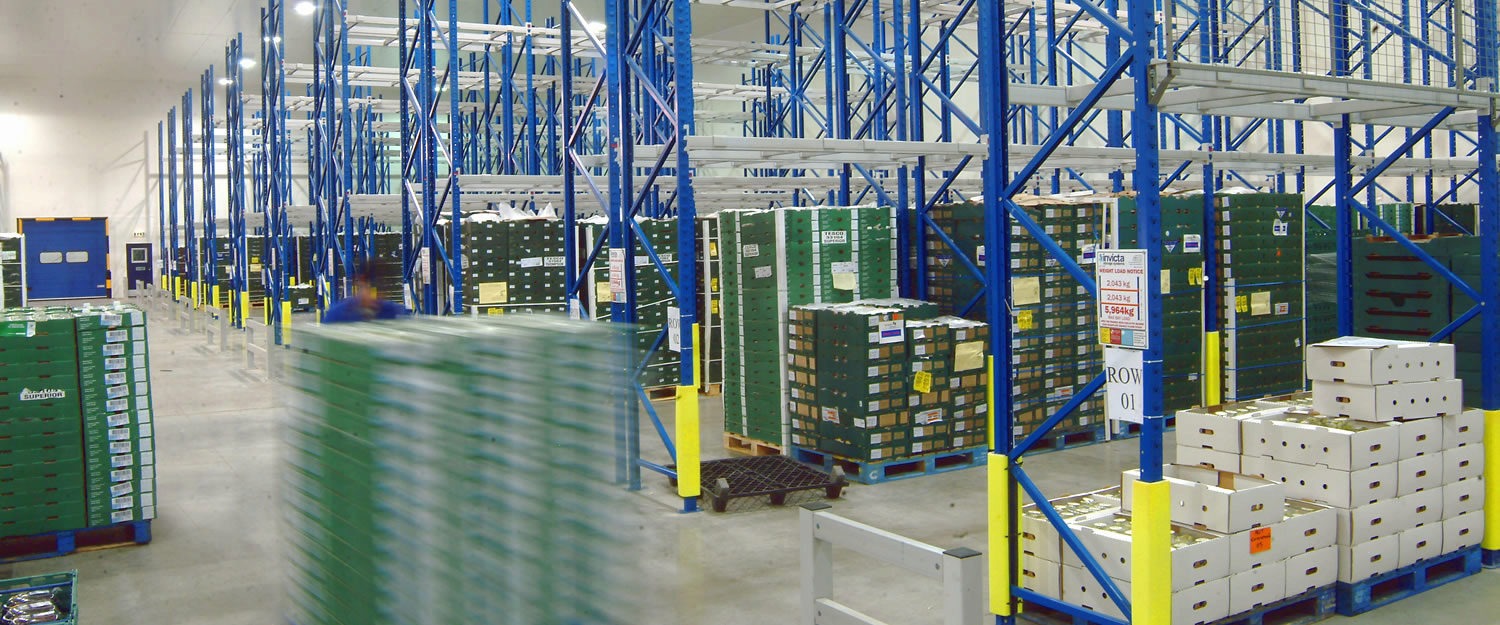For your information
You are being redirected to one of our divisional subsites which contains more detailed information on the required division. To navigate back to the main Invicta Group site, please click the link found in the footer at the bottom of the page.
5 ways to improve your cold storage warehouse
12th July 2022
Hot tips for cold places
Quick Quote
Contact Mick Coyne
To get a quotation or arrange a free site survey - Call Mick Coyne on
-
 UK
UK
Current location:
Quick Quote
Contact Mick Coyne
-
 UK
UK
Current location:
The demand for cold storage is at a record high, and doesn’t look like slowing down. A combination of Brexit, the pandemic and prevailing market forces have made cold storage for groceries, pharmaceuticals and other perishables highly sought after, and a precious resource for many businesses.
If you have a cold storage space – or are looking to create one – you’ll want to get the absolute maximum out of it. Here then are a few ideas to improve your cold storage space, improving its efficiency and capacity at a time when space is scarce.
Upgrade your vehicles
Given how expensive they can be, it’s perhaps no wonder that warehouse vehicles are often seen as a one size fits all solution. Forklifts which may not be designed to operate for extended periods in cold storage areas often end up there anyway, performing admirably and servicably – but never optimally.
Modern vehicles built for cold storage make a compelling argument for case-specific usage. These vehicles offer improved performance and efficiency at low temperatures, performing tasks more quickly and lasting longer than standard warehouse vehicles.
Increasingly, vehicles and other heavy equipment is also being offered ‘as a service’, allowing new vehicles to be rented and maintained. With leases to reduce the capital investment required – and adding the ability to test them out before committing – upgrading your cold storage vehicles makes more sense than ever.
Improve your racking
One of the most obvious ways to improve any storage space is to upgrade the storage itself. While you may feel that your pallet racking already maximises your storage capacity, new high density racking can confer substantial benefits, and as much as halve your storage footprint.
High density pallet racking formats such as gravity flow racking provide dense FIFO storage, and reduce the space required for loading and unloading. Crucially, these racking formats are built to perform at low temperatures, ensuring smooth operation and minimising damage to goods.
Multi tier racking can also make the most of any unused headroom in your storage space. By reducing the empty space that needs to be cooled, you will not only add more storage capacity to your existing warehouse space, but improve the energy efficiency of your cold storage area.
Harness a modern WMS
Cold storage requires more management than traditional warehouse storage, and a WMS may already be part of that. With a modern warehouse management system, however, almost any aspect of your warehouse’s management and operation can be tracked and logged, if not entirely automated.
By plugging in sensors or devices that can connect to the WMS, you can harvest data that will not only dictate the present operation of the cold storage space, but provide insights that will drive further improvements. These optimisations could, for instance, allow you to reduce the time that doors or shutters are left open, and thus the cost of maintaining ambient temperatures.
Another major benefit of a modern WMS is inventory management. By using either automatic sensors or handheld scanners, inventory can be tracked more precisely, and logged by the WMS. This will not only help to monitor expiring stock, but also automate the ordering process, ensuring that you never end up with more or less than you need.
Explore automation
Automation can be an ideal option for cold storage areas that are often unpleasant or difficult for people to work in. Robots don’t require any breaks – other than for charging or maintenance, naturally – meaning there is no health & safety or wellbeing consideration for extended shifts in a cold storage warehouse. Autonomous vehicles can not only operate for longer, but also out-of-hours if needed, creating entirely new efficiencies.
With an increasingly large and diverse array of options available, robots and autonomous vehicles (AVs) can fulfil a range of roles in and around the warehouse. Palletising robots can work with little to no oversight, taking care of strenuous tasks that become even more difficult and tiring at low temperatures. Elsewhere, robots can be used around production lines to freeze goods for storage, sort and pack items, or shuttle them on for transport or processing.
This ability for robots and AVs to work around the clock is particularly valuable for cold storage, where the products don’t stop ageing just because workers are off shift. Whether you’re freezing the goods yourself or simply a link in the chain, robots and autonomous vehicles built for cold storage use can help you operate around the clock, while keeping their key components at an ideal operating temperature.
Maintain your infrastructure
The critical infrastructure that keeps a cold storage warehouse ticking can go almost unnoticed in daily use, but you’ll notice if it suddenly stops working. However, failing to maintain it properly can also cause it to work less efficiently – something that can easily cause a cascade effect with other systems and processes.
Your condenser unit is key, and should be regularly inspected to ensure that debris isn’t allowed to accumulate, impeding its effectiveness. Similarly, the evaporator needs to have unrestricted airflow at all times, so checking that the fins are clear and the unit is free of ice accumulation is crucial.
The warehouse itself is also an important factor. While it may be less prone to damage than a typical storage room, which may be prone to mould, the warehouse should be cleaned regularly and thoroughly. Particular attention should be paid to the door seals, which will ensure that energy isn’t being wasted cooling outside air.
—
At a time of high energy prices and high demand for storage, cold storage plays a more critical role than ever in our national infrastructure. By utilising some of these tips, you can help to keep your cold storage warehouse running smoothly, saving money and freeing up space for additional stock.
Accreditations & Affiliations







Start your project
Tell us about your project. Please complete this form. One of our sales team will come back to you with more details. If you prefer, you can drop us an email.




Share/Like this page